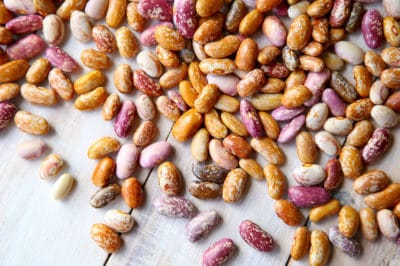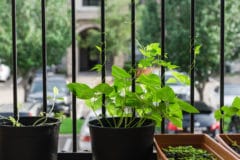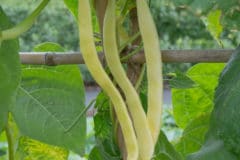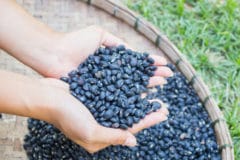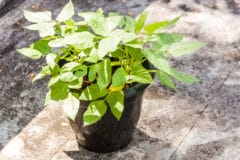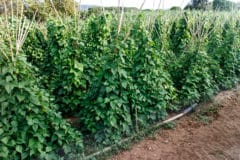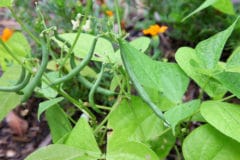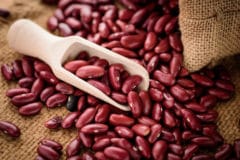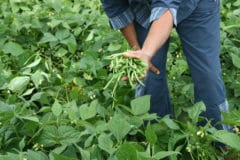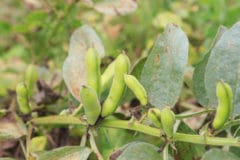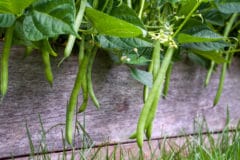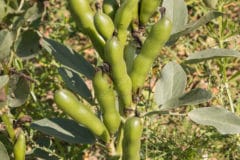Soil for Pinto Beans
Pintos, like all legumes, will fix nitrogen from the soil. However, they still need well-drained fertile soil for best growth. Native to a dry climate, they are not really drought tolerant, but excess water in the soil increases the risk of disease. Add extra humus to soil to increase fertility and promote better drainage. Well-aged manure and rotted leaves are good choices.
Bush Beans vs. Half Runners
Although some catalogs describe pole varieties of pinto beans, in reality the beans are either bush varieties or half runners. A half runner bean grows about three feet in a sprawling fashion rather than a vine. Half runners do need some support for best growth (bush beans don’t), but must be fastened to the trellis in some way as they don’t really climb.
Pinto Bean Varieties
Most seed catalogs simply list these beans under the name Pinto. However, there are a few distinct varieties:
- Long’s Peak – commercial bean, a half runner type that grows more upright.
- Nodak – Developed in North Dakota; half runner, very productive.
- Centennial – resistant to several diseases, including mosaic and rust.
- Grand Mesa – resistant to rust and more tolerant of wet conditions.
Planting Pinto Beans
Pintos will do best if not planted until the soil is warm – usually two or three weeks after the last expected frost date. Soaking beans for eight hours prior to planting may improve germination. Plant about one-and-a-half inches deep and four to six inches apart. Half runner types need the additional space. For rows, plant about 30 inches apart.
Growing Conditions
Pintos are tropical plants and very frost sensitive. If there is a risk of a late frost, cover with row covers to provide protection. Keep weeds down to prevent competition. Don’t add high nitrogen fertilizer to the growing beans. Nitrogen spurs leaf growth at the expense of flowers and pods. Keep well watered but avoid watering the leaves; it increases the risk of fungal diseases.
Harvesting Pintos
Maturity dates for pintos range from 90 to 150 days. Cool weather can slow maturity. Leave pods on the plants until they are dry. If rain threatens and the beans are mature or nearly so, pull plants and hang in a dry building with good air circulation. Once the beans are completely dry, thresh the seeds from the pods.
